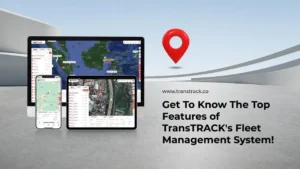Get to Know the Duties, Benefits and Differences of the Distribution Center!
Posted on June 19, 2023 by Nur Wachda Mihmidati

A distribution center is a physical facility used by a company or organization to manage and distribute products to customers or points of sale. This facility acts as a central point in the supply chain, where products from various sources are collected, stored, and then distributed to the final destination.
Distribution centers are usually designed for maximum efficiency and productivity. They are often equipped with advanced automation technology and inventory management systems, such as barcode scanning devices, automated order processing systems, delivery scheduling systems, and logistics management software.
In some cases, large companies have several this facility in different strategic locations to cover a wider area and expedite product delivery to customers. This helps reduce delivery times and costs, and allows the company to maintain optimal inventory and meet customer demands quickly. For more details about this distribution center, you can read the following TransTRACK article!
Distribution Center Duties
The following is a further explanation of each task of this facility:
Means of Breaking the Volume of Goods
The distribution center functions to receive goods in large quantities from suppliers or factories. Then, they break the volume of goods into smaller units to distribute them to final destinations, such as retail outlets or customers.
Ensuring Goods Inventory
One of the important tasks of the distribution center is to manage inventory efficiently. They are responsible for monitoring inventory, performing inventory counts, and managing inventory replenishment cycles to keep pace with market demand.
Used as Product Assembly Place
Some distribution centers also function as product assembly places. This is especially true in industries such as electronics or automotive, where product components are sent to distribution centers to be assembled into final products before being distributed to customers.
Increasing Economies of Scale
Distribution centers enable companies to achieve higher economies of scale in their operations. By aggregating various products from various suppliers or factories, this facility can reduce transportation costs and maximize the use of resources, resulting in higher efficiency.
Used as Storage of Goods
One of the main functions of a distribution center is to provide a safe and organized storage space for the items to be distributed. They have a careful organization system to store, group and track these items for easy access when needed.
It should be noted that this facility duties may vary depending on the industry, company size, and business model adopted. However, the general aim of a distribution center is to ensure the smooth flow of goods from suppliers to final customers in an efficient and effective manner.
Distribution Center Benefits
The following is a further explanation of each benefit of the Distribution Center:
More Effective in Time
Distribution centers help improve efficiency in the supply chain by grouping and processing large quantities of goods. By having sufficient stock of goods in this facility, the company can reduce the time it takes to fulfill customer orders. Distribution centers can also deliver products more quickly and accurately, reducing overall delivery times.
Retailers can buy their products as needed
Distribution centers allow retailers or retail outlets to buy products according to their needs. By having a this facility as a source of inventory, retailers do not need to buy or store large quantities of goods in their own stores. They can order products flexibly and accept delivery according to customer requests.
Providing Convenience for Consumers
Distribution centers help increase the level of service and convenience for consumers. By having sufficient stock of goods in the distribution center, companies can deliver products quickly and efficiently to customers. This reduces customer waiting time and increases their satisfaction in obtaining the desired product.
Save cost
Distribution centers can generate efficiencies and cost savings in the supply chain. By gathering inventory in one location, companies can optimize the use of space and resources, reduce storage and inventory management costs. In addition, with more efficient delivery arrangements, distribution centers can reduce overall transportation and logistics costs.
It should be noted that distribution center benefits can also vary depending on the industry, company size, and the particular business context. However, in general, distribution centers provide benefits in increasing operational efficiency, improving customer service, and reducing costs in the supply chain.
[display-post-read-also]
The difference between Warehouse and Distribution Center
Although warehouse and distribution center are often used interchangeably, there are some important differences between the two. Following are the main differences between a warehouse and a distribution center:
The main function
- Warehouse: The primary focus of a warehouse is to store large quantities of goods and maintain a secure inventory. The warehouse is responsible for receiving, storing and managing goods efficiently. Usually, the warehouse acts as a storage point in the supply chain.
- Distribution Center: A distribution center has a broader role than a warehouse. In addition to the storage function, this facility is also responsible for managing inventory, processing orders, arranging shipments, and optimizing the flow of goods to the point of sale or end customer. The distribution center plays a role in distributing goods to their final destinations quickly and efficiently.
Activities Performed
- Warehouse: Warehouses usually carry out activities such as receiving goods, storing, maintaining inventory, and releasing goods when needed. They may also perform activities such as repackaging and quality checking of goods.
- Distribution Center: Apart from the activities performed in the warehouse, the distribution center also performs activities such as order processing, order fulfillment, repackaging, further quality checking, shipping arrangements, and coordination with transportation to arrange efficient shipments.
Orientation on Service Provision
- Warehouse: Warehouses are generally more oriented towards storage and keeping sufficient stock of goods. The main focus is maintaining the security and integrity of the goods stored in the warehouse.
- Distribution Center: Distribution centers are more customer service oriented. They focus on processing orders quickly, delivering accurately, and meeting customer demands efficiently. This facility plays a role in distributing goods from source to final destination by considering time, cost and customer satisfaction.
Location and Network
- Warehouse: Warehouses are generally located in strategic locations that are separate from population centers. They can be located outside the city or in industrial areas with good transportation access.
- Distribution Center: Distribution centers are usually located in more strategic locations and are close to markets or sales points. They are designed to support the rapid distribution of products to customers or retailers, so they are likely to be located near population centers or major transportation routes.
It should be noted that the differences between a warehouse and a distribution center are not absolute, and there is overlap in the functions and activities of the two depending on the business and industry context. In some cases, the warehouse may function as a distribution center, or the distribution center may have warehouse aspects within it.
In optimizing distribution center operations, the application of a Fleet Management System is important. A Fleet Management System such as that offered by TransTRACK can provide an efficient and effective solution in managing shipping fleets.
By using a Fleet Management System, distribution centers can gain better visibility of their delivery fleet. This system makes it possible to track and monitor fleet locations in real-time, providing information on routes taken, vehicle speeds and estimated arrival times.
By implementing the Fleet Management System from TransTRACK, distribution centers can improve operational efficiency, reduce shipping costs, and increase customer satisfaction. Gain a competitive edge by leveraging this innovative Fleet Management System solution.
Contact TransTRACK immediately and explore the capabilities of their Fleet Management System to optimize your distribution center operations.
Recent Post
Topic :
 Bahasa Indonesia
Bahasa Indonesia









